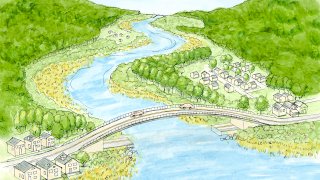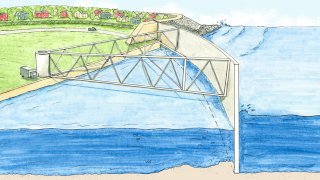Foresight
In ways that may range from unsurprising to unexpected, coastal evolution is impending across the social, economic and environmental spectrum. Strategic foresight is a tool for broadening awareness about what is currently out of mind yet could be just over the horizon. It does not predict the future: it guides managers to anticipate a wider range of possible future conditions to assist with preparation and decision making. The strategic foresight process supports goals of assessing vulnerabilities; developing and implementing adaptation strategies; and engaging and educating stakeholders.
Although impacts will be diverse, they can have numerous intersections with Clean Water Act purposes. Being prepared involves envisioning developments related to: point and nonpoint sources of pollution; healthy fish, plants, and wildlife; public uses; and restoring and protecting habitat. A strategic foresight analysis of coasts at mid-century can begin conversations about emerging risks and opportunities in several understudied sectors.
Foreseeing Coastal Change To Strategically Guide Adaptation (pdf)

Habitat
- Removing tidal restrictions
- Floating wetlands
- Seagrass crashes
- Marsh migration corridors
- Blue carbon

Infrastructure
- Combined sewer systems
- New water infrastructure
- Generating electricity
- Storm gates

Water quality
- Refuge from acidification
- Lowering stream temperature
- Deoxygenation
- Marine heatwaves

Society
- Floating buildings
- Waterfront access
- Extended boating season
- Artificial intelligence
- Abandoned sites
Regardless of whether a future condition is wanted or unwanted, likely or not, environmental managers can make choices to favor preferred outcomes.
Further information
- OMB Circular No. A-11 (2024). SECTION 230 – AGENCY STRATEGIC PLANNING. 230.1 What is an Agency Strategic Plan?
